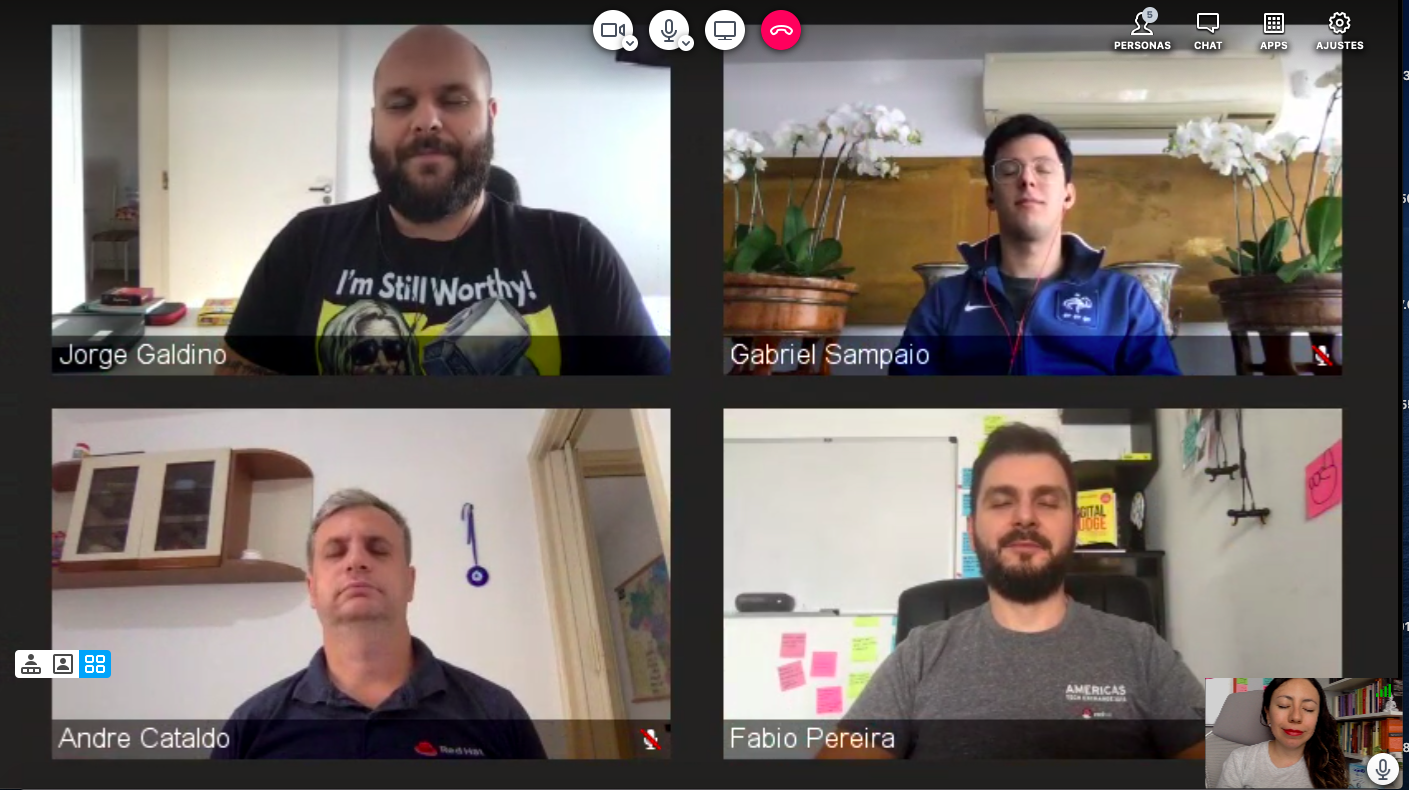Meditation
Generate positive emotions for the team and help to develop an empathetic mindset towards team members
Margarita Perera Ruiz
What Is Meditation?
This practice consists of a meditation of 10 minutes based, on the Metta Bhavana Buddhist practice, that can help to develop an empathetic mindset towards team members, calm thoughts, stimulate positive emotions, reduce the level of stress, and relieve anxiety. The most common form of the practice is in five stages, each of which should last about 2 minutes for a beginner.
Why Do Meditation?
We value individuals and interactions over processes and tools, so we provide tools for team members to improve their interactions. Sometimes, because of daily work, misunderstandings may arise in the team, as well as lack of integration, so we need to help generate empathy and positive emotions within the team. It is suggested to do this practice before the start of a retrospective, so that people will be more receptive, empathetic, and calm.
How to do Meditation?
Steps
Invite the group to a 10-minutes meditation to generate positive emotions for the team.
Explain that this practice will have 5 stages of 2 minutes each:
- Self
- Friend
- Neutral person
- Difficult person
- Everyone in the team.
It is usually best to choose the people for the stages before you begin the meditation. So, ask the participants to choose three team members in their minds:
- The first must be the person who they get along with best. It can be someone they consider their friend.
- The second person is someone neutral, preferably someone you have some contact with but for whom you have no particular feelings of like or dislike. It may be the person with whom you have the least contact on the team.
- Finally, the third person will be the team member they dislike the most; someone with whom they may have had a problem or disagreement: Someone who can be difficult to work with. Also bear in mind that well-wishing does not necessarily imply approval of any of their specific behaviours.
Give some recommendations:
- In each stage, to generate positive emotions, use phrases to focus your intention, such as:
- may I be happy
- may you be well
- may she be free from suffering
- may he make progress
- Using memories, such as reconnecting with times when you were experiencing an attitude of loving-kindness in the past.
- Using imagination, for example, to imagine people being happy or well or to include them in warm rays of light.
- Attending to sensations in your body associated with loving- kindness, for example, openness, warmth, and relaxation.
Make sure everyone is seated comfortably.
Set a timer for 2 minutes and repeat 5 times, the use of a meditation app is recommended (e.g. Insight Timer; it has a timer with programmable meditation bells).
Ask participants to close their eyes and focus on their breath. Have them inhale through their nose and exhale through their mouth slowly.
Start to guide the meditation. This is an example:
Begin the practice by acknowledging your current emotional state, whatever this is. Then, it is helpful to search for any elements of kindness, appreciation, or well-wishing and to dwell on them with a view that helps them enhance.
-
1st stage: Self. Generate a feeling of loving-kindness towards yourself. Start by becoming aware of yourself and focusing on feelings of peace, calm, and tranquility. Then, let these grow in feelings of strength and confidence and develop as love within your heart. You can use an image, like a golden light flooding into your body, or a phrase such as ‘may I be well and happy’, which you can repeat to yourself. These are ways of stimulating the feeling of loving-kindness for yourself.
-
2nd stage: Friend. Bring them to mind as vividly as you can, and think of him/her good qualities. Feel your connection with your friend, and your loving he/she, and encourage these to grow by repeating ‘may he/she be well; may he/she be happy’ quietly to yourself. You can also use an image, such as a shining light from your heart into him/her. You can use these techniques — a phrase or an image — in the next two stages as well.
-
3rd stage: Neutral person. Now extend your well-wishing and loving-kindness towards a ‘neutral’ person, preferably someone you have some contact with but for whom you have no particular feelings of like or dislike, this may be someone you do not know well but see around: "May he/she be happy, may she/he be well".
-
4th stage: Difficult person. Include in your loving-kindness a person you dislike or currently have difficulty with: "May he/she be happy, may she/he be well". Trying not to get caught up in any feelings of hatred, think of him/her positively, and send your positive emotions to him/her as well.
-
5th stage: Everyone. First equalize your well-wishing across all four people so far: yourself, the friend, neutral person, and difficult person. Then gradually extend the well-wishing to include all members of the team. Have a sense of waves of loving-kindness spreading from your heart to the team: May we be happy, may we be well.
Then, gradually relax out of meditation, and bring the practice to an end.
When 10 minutes are over carry on with your sprint ceremonies.
The short version may include only 3 stages:
- 1st stage Self.
- 2nd stage: Friend.
- 5th stage: Everyone.
Another variation could work is extending each stage from 2 minutes until 5 minutes.
Tips for remote working
Works quite well remotely, be sure to mute all microphones and ask participants to move to a quiet room and close the door.
Look at Meditation
Links we love
Check out these great links which can help you dive a little deeper into running the Meditation practice with your team, customers or stakeholders.

